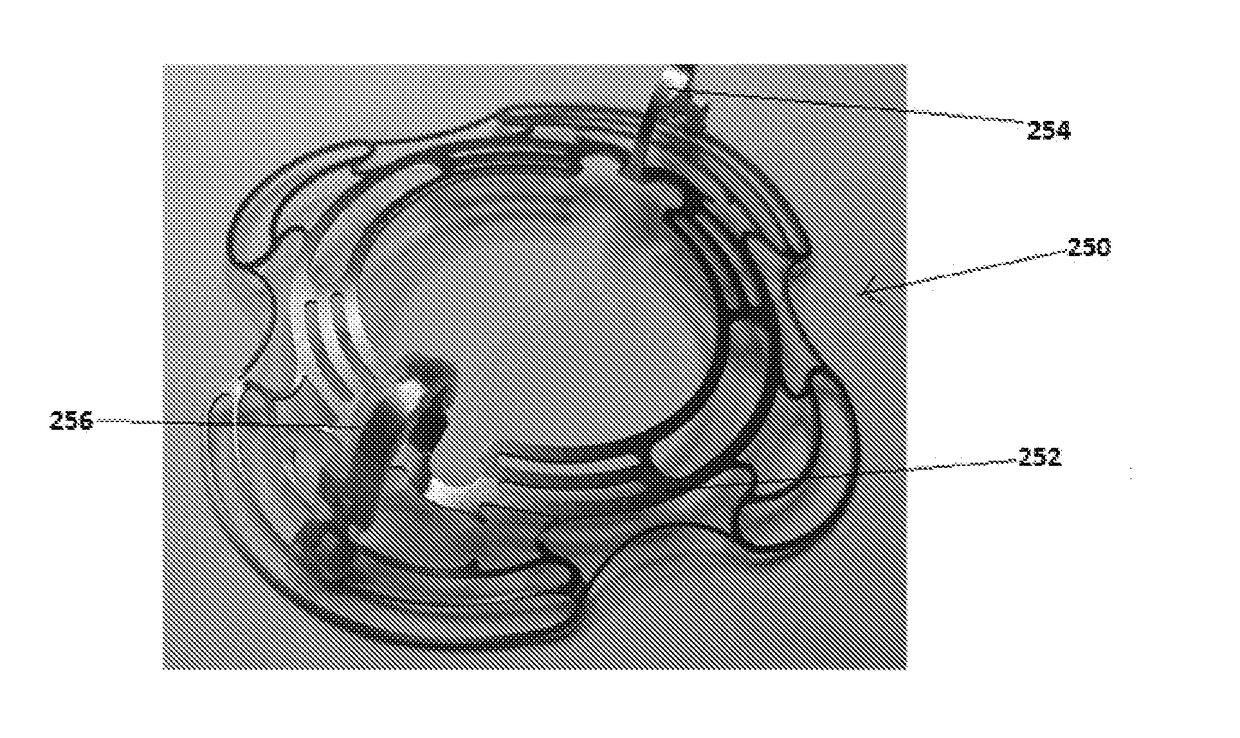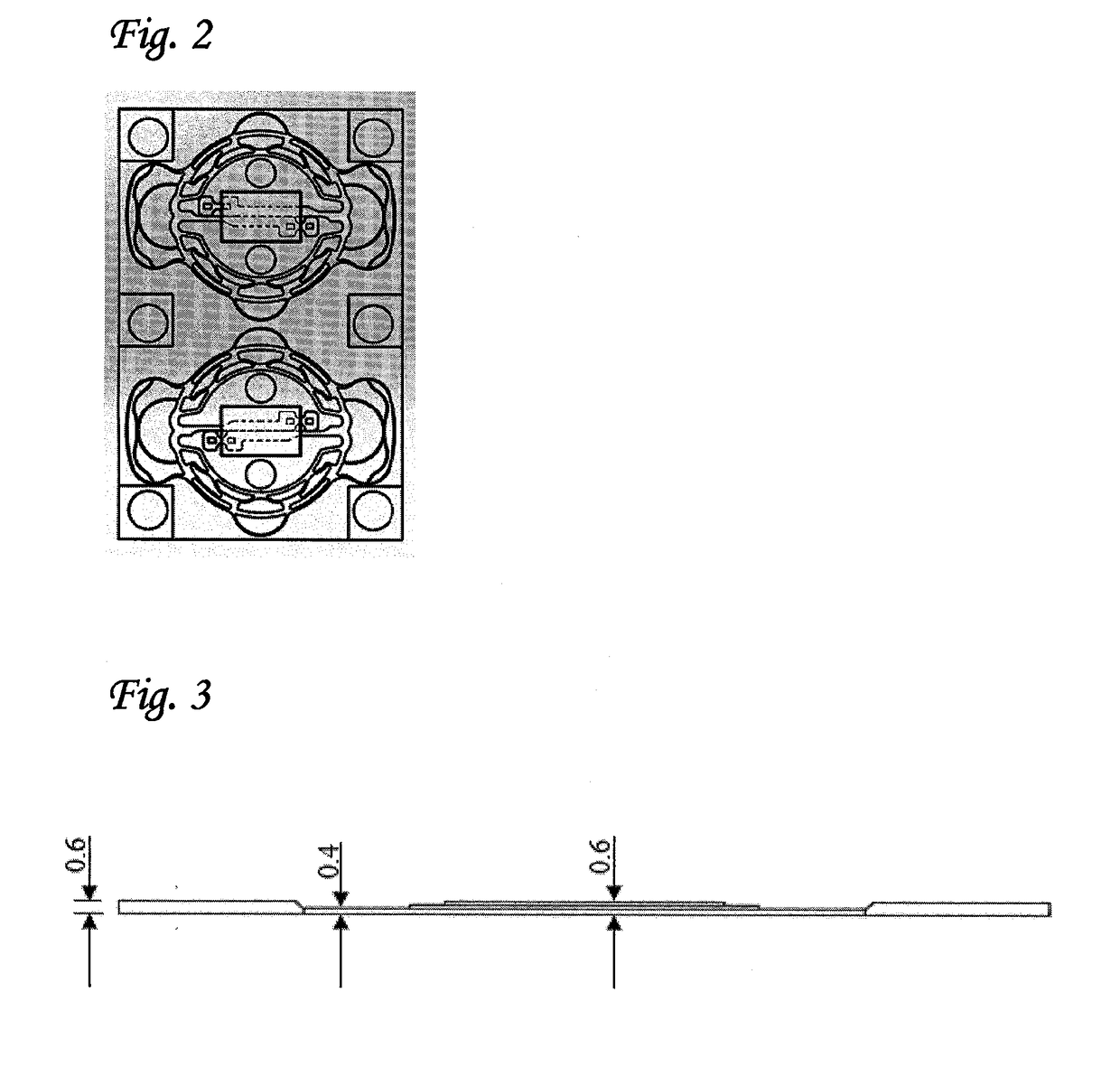Intracardiac devices comprising stabilizing elements having improved fatigue resistance
a technology of stabilizing elements and stabilizers, which is applied in the field of stabilizers, can solve the problems of still further increases in the value of pre-load force, and achieve the effect of reducing total stress and strain
- Summary
- Abstract
- Description
- Claims
- Application Information
AI Technical Summary
Benefits of technology
Problems solved by technology
Method used
Image
Examples
first main embodiment
[0072]The present inventors have now found that it is possible to manufacture an intracardiac device in which different regions of said device have different thicknesses. In this way, it is possible to construct a device in which at least a portion of the one or more stabilizing wings is thicker than the body of the device. It has been found by the present inventors that this modification enables the manufacture of an intracardiac device that has greater resistance to displacement following deployment in the heart, as well as a greater resistance to fatigue and fracture, but which does not lead to an increased crossing profile of the crimped device.
[0073]This approach is, in fact, counter-intuitive, since all of the standard manufacturing techniques used to construct intracardiac devices from tubes or sheet metal (e.g. computer-aided design, laser cutting and so on) entirely ignore the thickness of the tube or sheet used. As a consequence, most, if not all devices of this type that ...
second main embodiment
[0108]In this aspect, the present invention is directed to a device suitable in size and form for transcatheter delivery to the mitral valve annulus, wherein said device comprises a device body and one or more stabilizing wings, wherein each of said wings comprises one or more primary anchoring arms, the purpose of which is to apply upwards (wherein in this example—“upwards” refers to a force which is directed from the ventricle towards the atrium) axially-directed stabilizing forces onto the tissues at or near the mitral annulus, preferably in the region of the valve commissures, and one or more auxiliary arms, the purpose of which is to reduce the strain on the primary anchoring arm(s) following deployment of said device. The stabilizing wings will generally also comprise one or more connecting arms for connecting the aforementioned arms to the device body.
[0109]The general arrangement of the various components of the stabilizing wings of the present invention will now be describe...
third main embodiment
[0146]In a further group of embodiments, the stabilizing wings of the intracardiac device further comprise additional elements that serve to improve their fatigue resistance during long-term use. Examples of such additional elements include: wire-covered wings, polymer-sleeve coated wings and wings fitted with leaf springs.
[0147]Thus, in one preferred embodiment of the intracardiac device of the present invention, the stabilizing elements comprise stabilizing wings having a wire coil wound therearound, wherein said wire coil serves to improve the fatigue resistance of said stabilizing wings. While a wire of any suitable material may be used for this embodiment, in one highly preferred embodiment, the wire used is a metal wire, most preferably a Nitinol wire. Alternatively, the wire may be manufactured from a biocompatible polymer including (but not limited to) polyester or Nylon. Preferably, the wire is tightly wound around the stabilizing wings such that there is no fluid-permeable...
PUM
 Login to View More
Login to View More Abstract
Description
Claims
Application Information
 Login to View More
Login to View More - R&D
- Intellectual Property
- Life Sciences
- Materials
- Tech Scout
- Unparalleled Data Quality
- Higher Quality Content
- 60% Fewer Hallucinations
Browse by: Latest US Patents, China's latest patents, Technical Efficacy Thesaurus, Application Domain, Technology Topic, Popular Technical Reports.
© 2025 PatSnap. All rights reserved.Legal|Privacy policy|Modern Slavery Act Transparency Statement|Sitemap|About US| Contact US: help@patsnap.com



